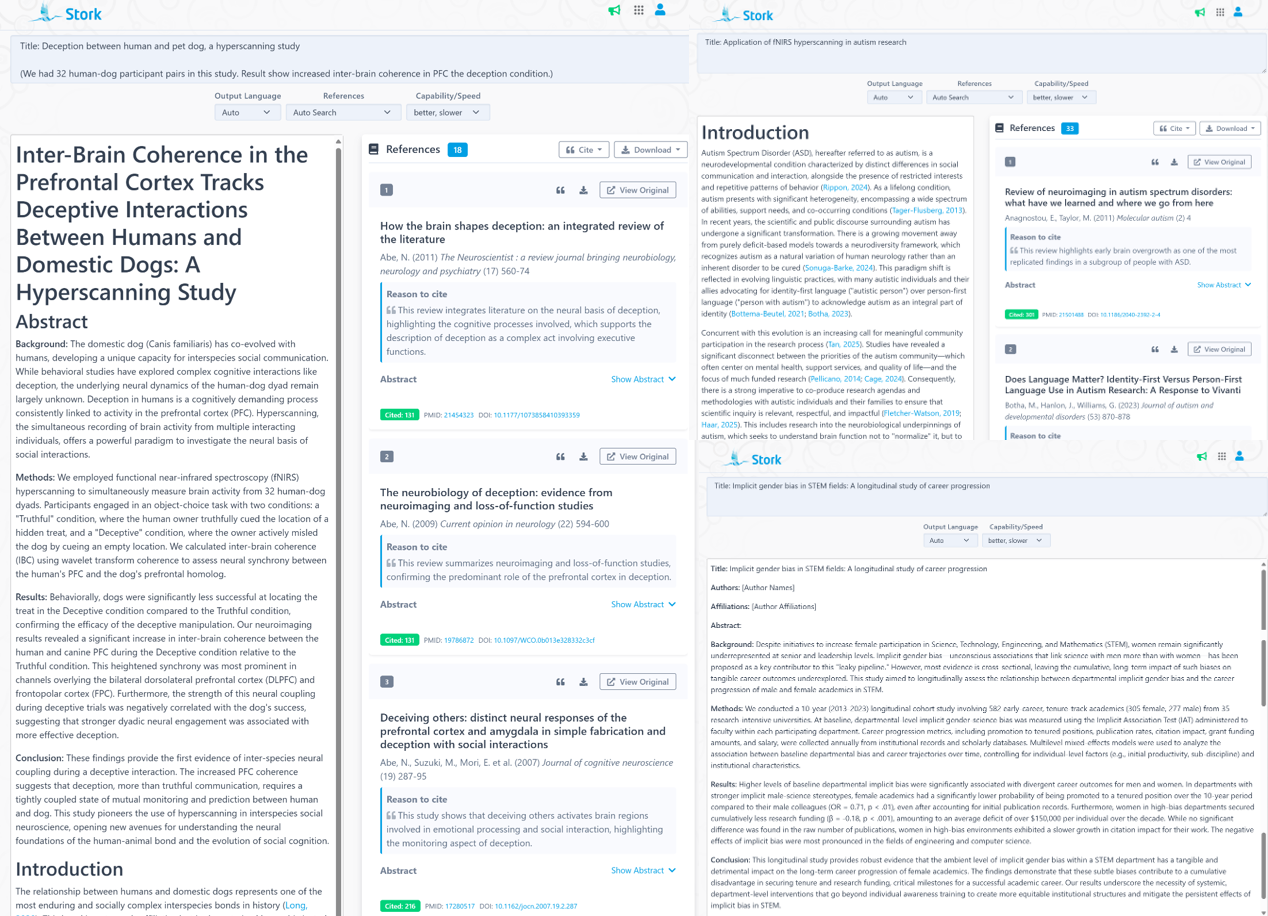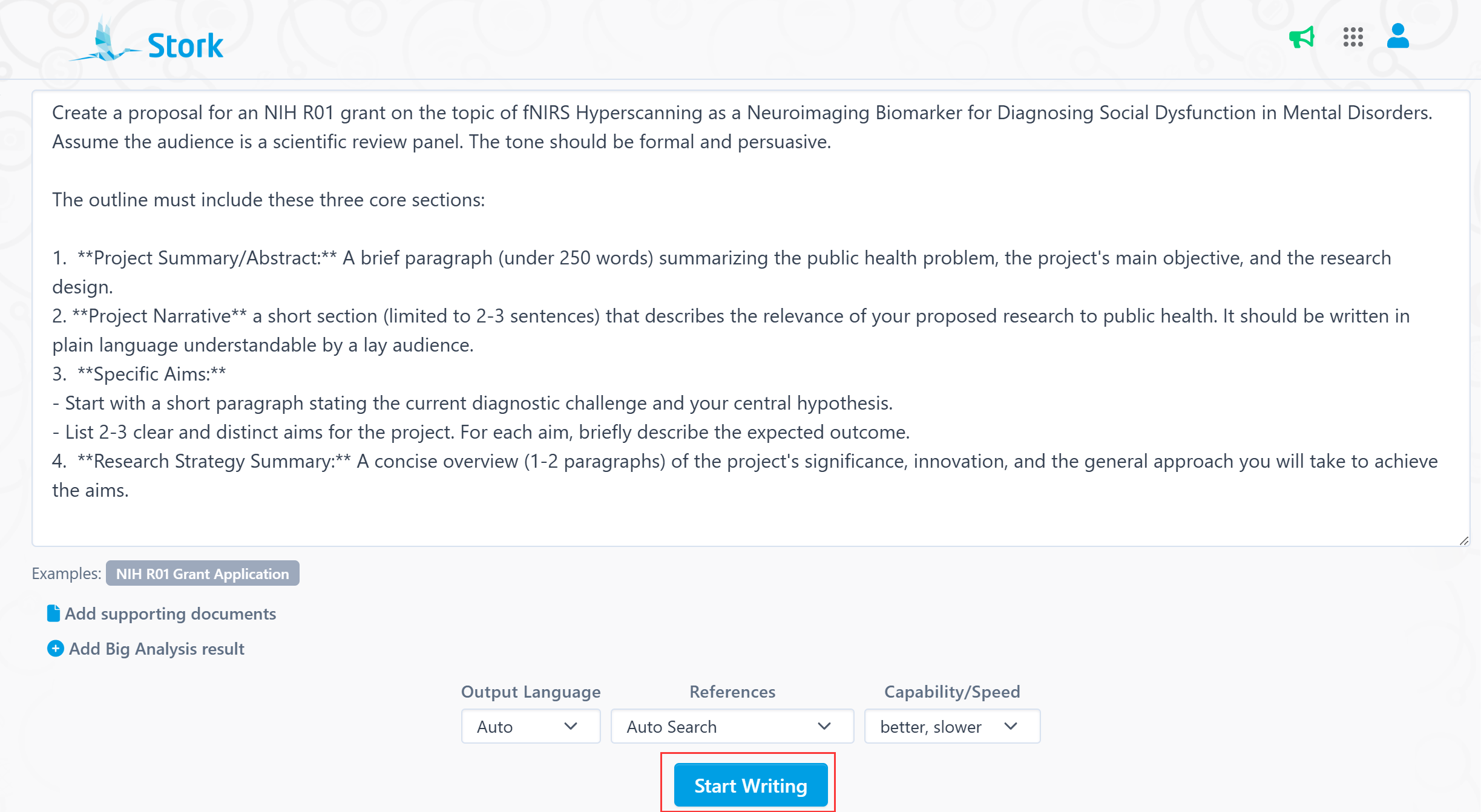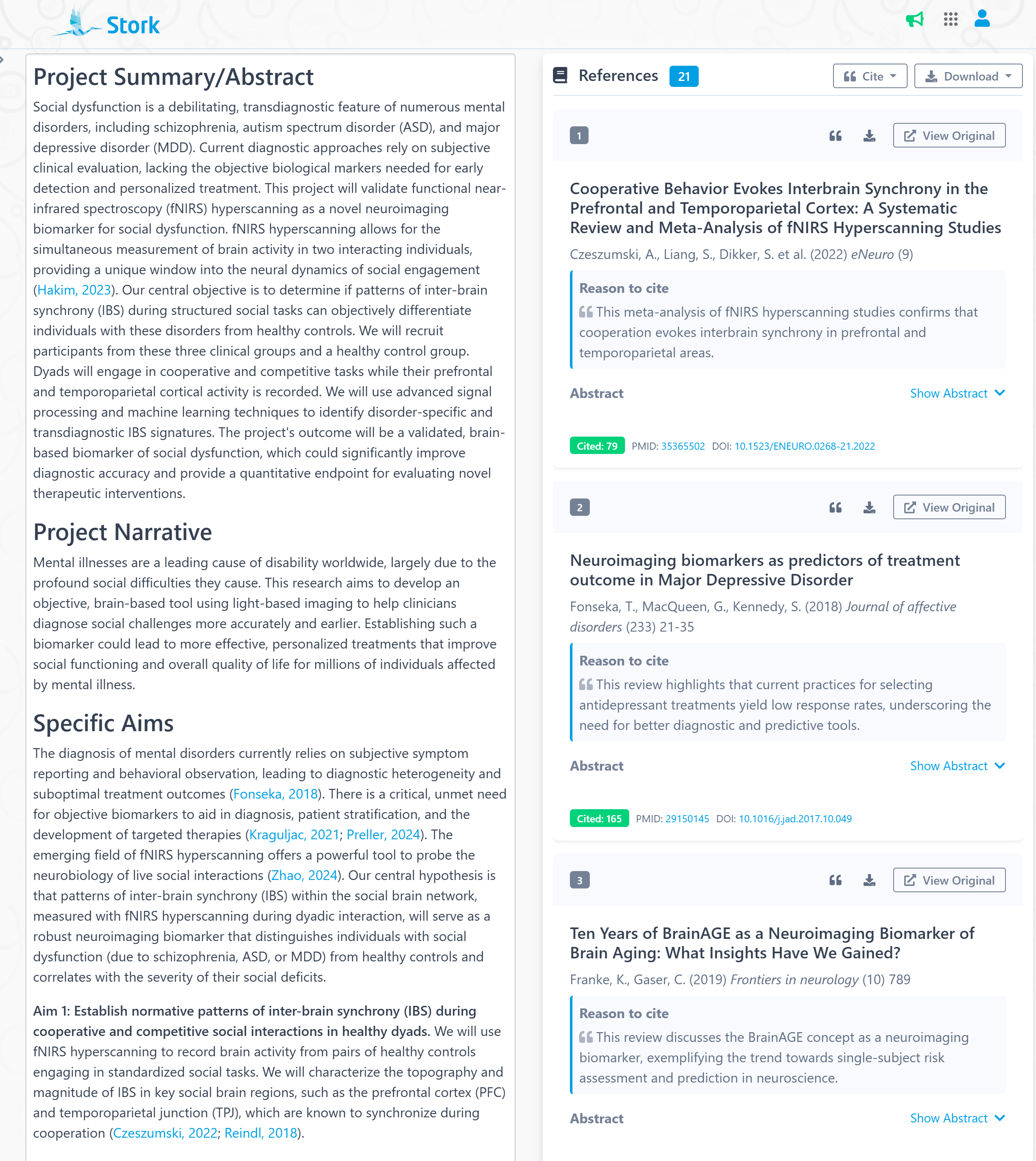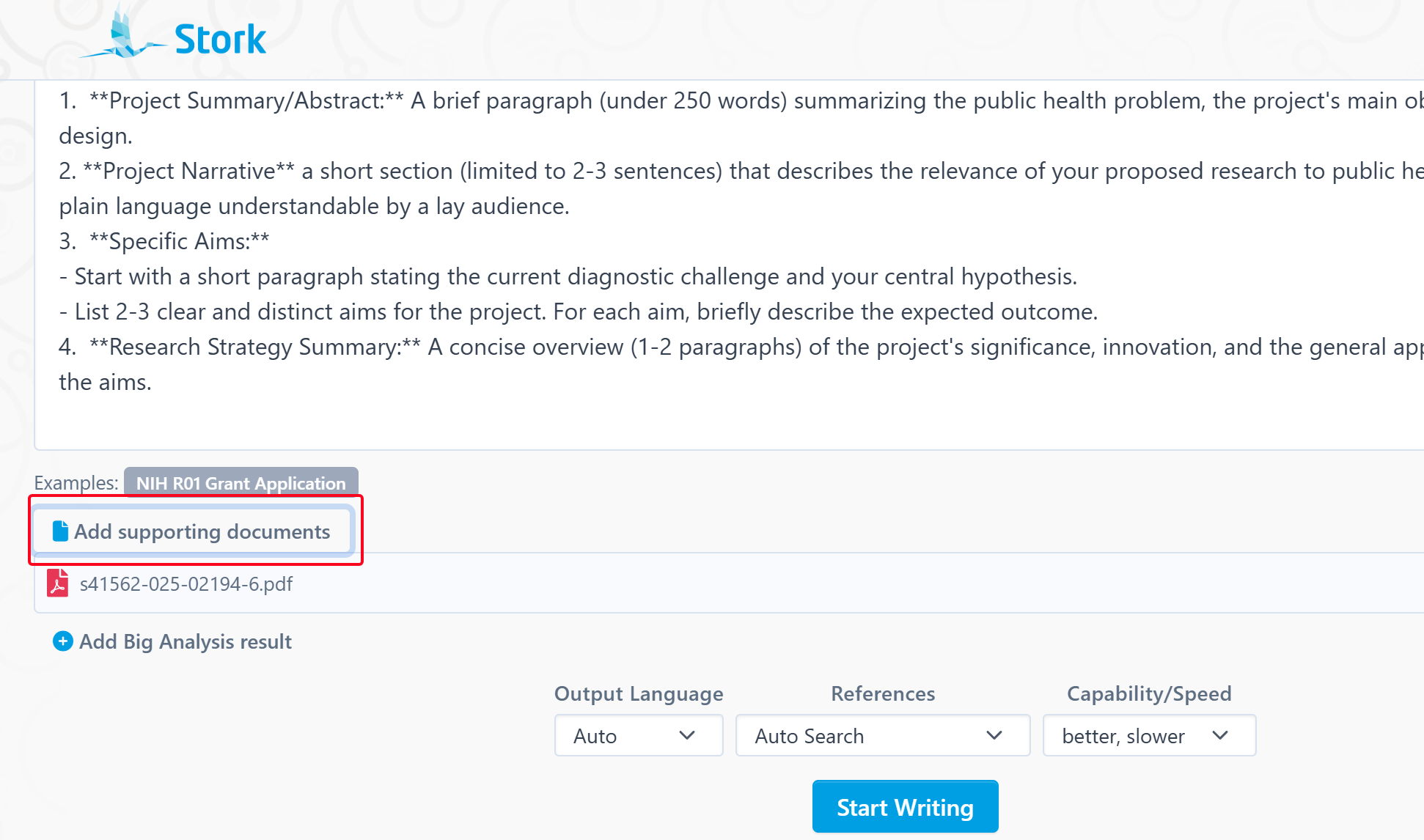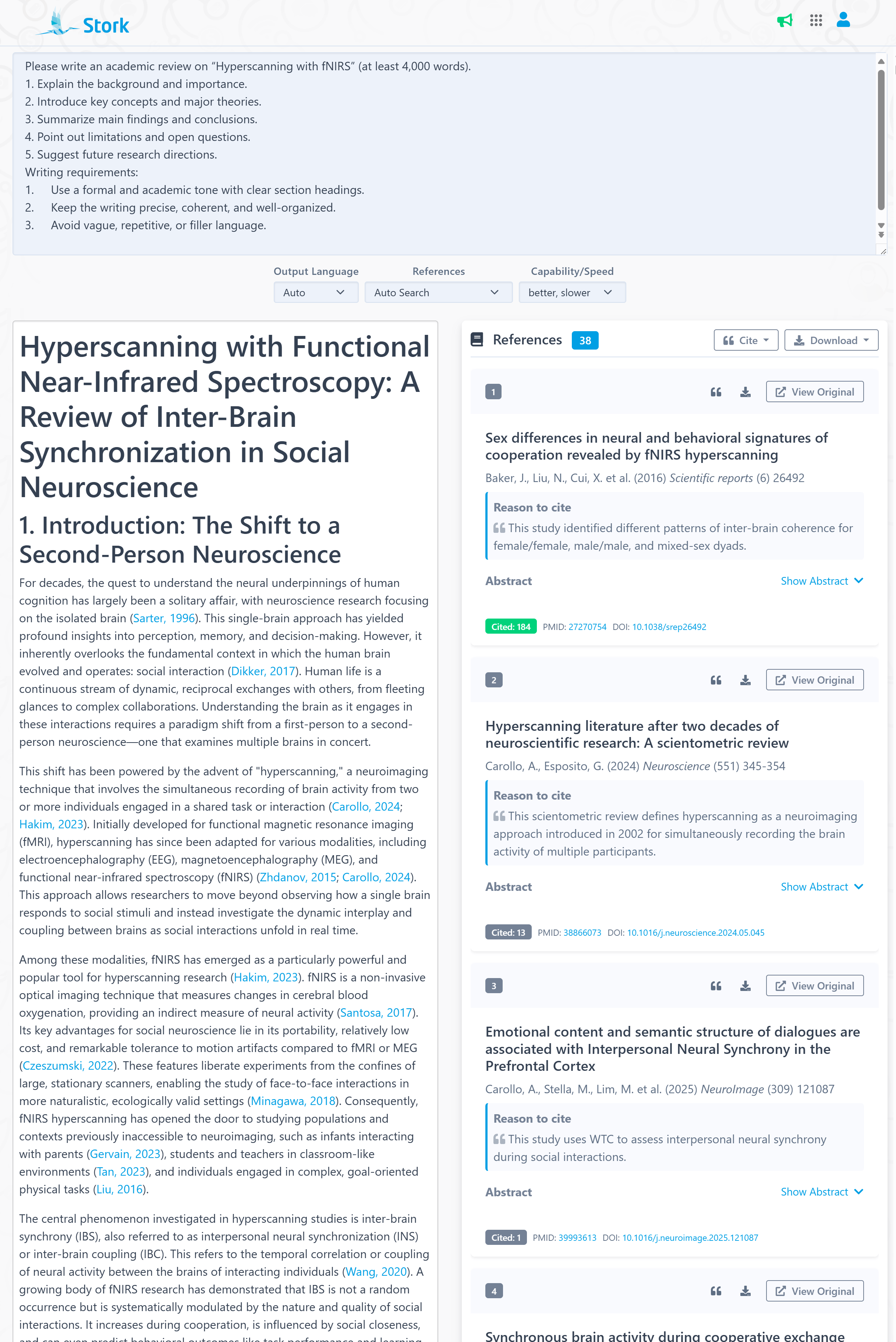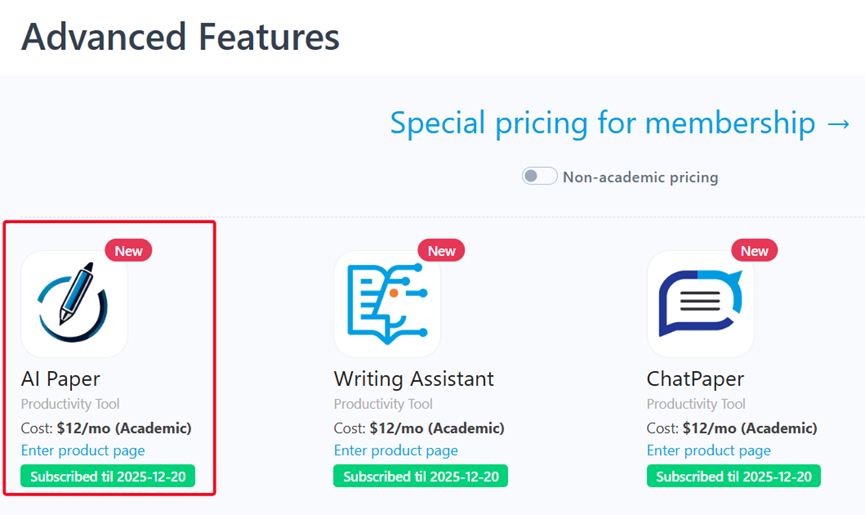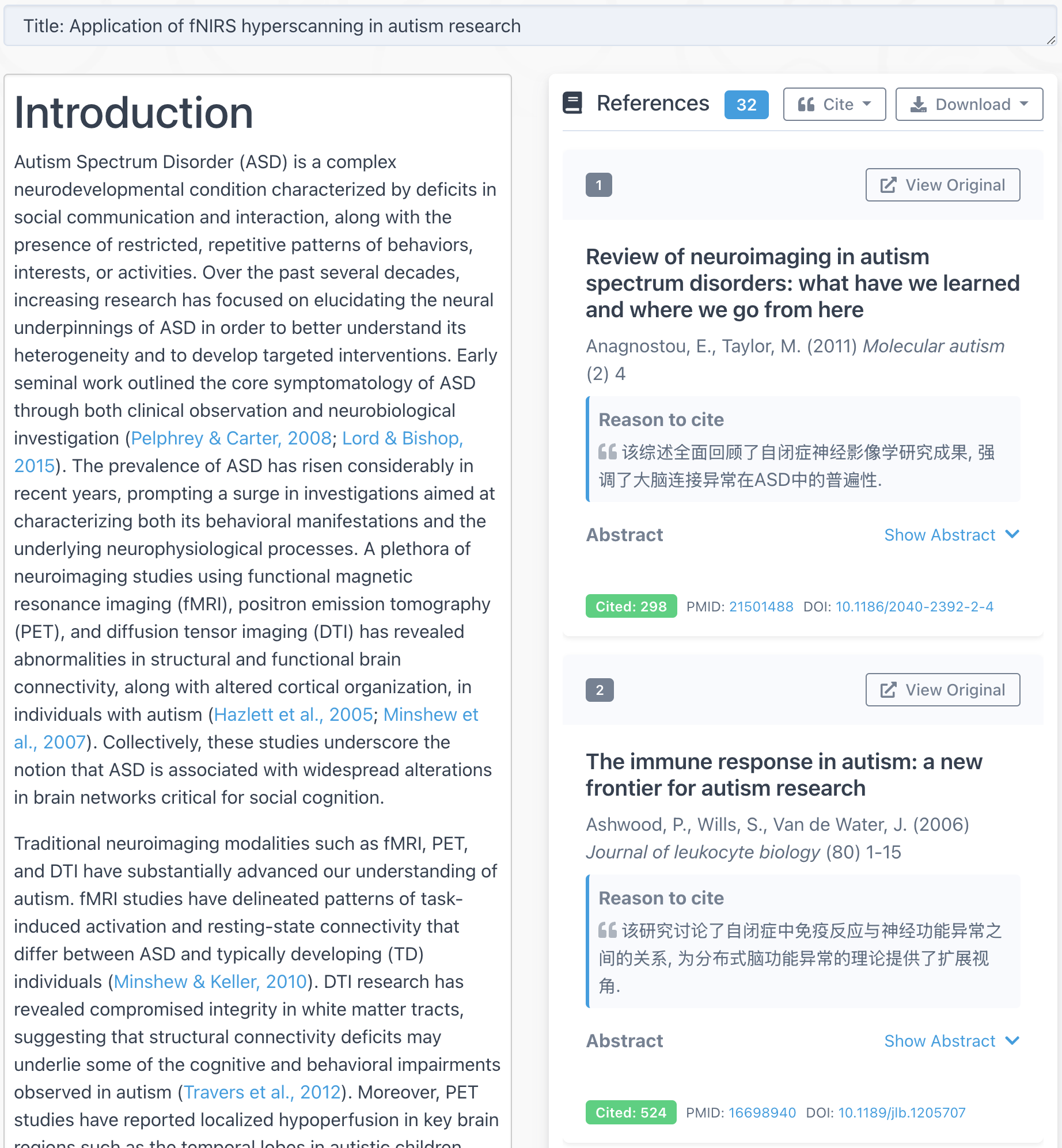
TL; DR
AI Paper just got an upgrade — there’s now an “Other” option, a flexible space where you can write anything: reviews, research plans, or even funding proposals.
Academic writing often feels like a quiet battle: There’s always something to write — an introduction, a discussion, an abstract, a short paper, or that never-ending proposal — but somehow, the first step is always the hardest.
That’s why AI Paper exists.
It’s already helped many of us get started: giving structure to introductions, offering outlines for discussions, and even helping design a clear framework for full paper.
But real research writing is rarely that neat.
Sometimes you just need a rough draft of a research plan.
Sometimes you want to write a review or a meta-analysis.
Sometimes you’re working on a grant proposal that doesn’t fit any existing template.
Now, you finally have a place for all of that — “Other”
Just tell AI Paper what you need to write, and let it do the heavy lifting.
No more clicking through fixed categories like Introduction or Methods — you decide where to begin.
For example, if you’re writing an NIH R01 proposal, you can paste the title and requirements directly, hit Start Writing, and watch AI Paper draft a well-organized, citation-rich text.
And if you want to bring in your own research background, you can upload supporting materials through Add supporting documents, so that the writing fits your project more closely.
When writing a review, you can be as specific as this:
Please write an academic review on “Hyperscanning with fNIRS” (at least 4,000 words).
1. Explain the background and importance.
2. Introduce key concepts and major theories.
3. Summarize main findings and conclusions.
4. Point out limitations and open questions.
5. Suggest future research directions.
Writing requirements:
1. Use a formal and academic tone with clear section headings.
2. Keep the writing precise, coherent, and well-organized.
3. Avoid vague, repetitive, or filler language.
Research writing doesn’t always start with a perfect outline — sometimes it just starts with an idea. Now you can turn that idea into words, directly.
Open AI Paper, click on “Other,”
and see what it can write with you, not for you.
【How to Use】
AI Paper is an advanced feature offered by Stork, which requires subscription (registered users can try 10 articles for free). After registering/logging in to Stork (https://www.storkapp.me), you can find AI Paper under the advanced features section. Then you can try it out or subscribe. Alternatively, you can visit the official AI Paper website directly at https://www.storkapp.me/aipaper/

